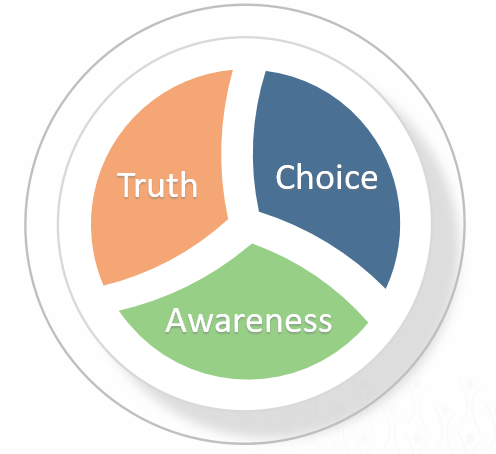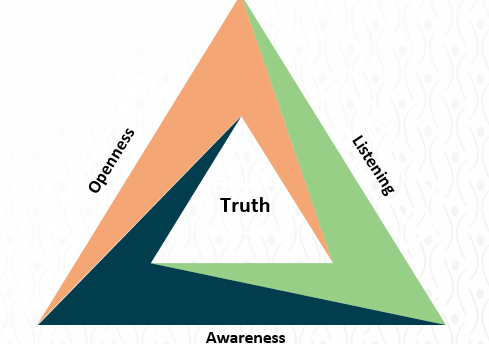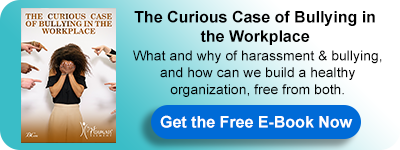Towards a Free-Bully Zone
The impact and cost of bullying on the workplace are high. Employees who file lawsuits to protect themselves put the organization’s reputation, thus it's branding, on the verge. It costs employees their well-being and leads to turnover. Which in turn puts the organization under pressure and expenses of hiring. Moreover, an employee subjected to harassment might lose their self-esteem, perform poorly, and might start reporting repetitive absenteeism in an attempt to protect themselves. The culture turns hostile. Therefore, freeing the workplace from bullying and harassment is a necessity that helps keep the organization safe, productive, and effective without sidetracking employees.
This article highlights a tool called The Human Element. It provides an approach that is based on three principles. The Human Element helps organizations increase their productivities through Individuals and teams’ development. It also helps eliminate bullying and harassment in the workplace by addressing the root causes.2
In her mid-thirties, Monica, an Operational Manager, has been accused of bullying Judy, one of her team members. The team member who filed an official complaint to HR tolerated Monica’s harassment as she dropped racial belittled her work, put her down, and attacked her verbally for the past year.
HR walked Monica through the Three Principles.

Principle 1: Awareness
“By Becoming self-aware, you gain ownership of reality; in becoming real, you become the master of both inner and outer life”
- Deepak Chopra
Self-Awareness is about understanding your thoughts, behaviors, feelings, and motives in different situations. It’s about understanding yourself. Gaining awareness is a conscious process. When you explore the experiences you go through, and realize your feelings, thoughts, and behaviors as you go through them. Self-awareness helps you understand your opinions and choices during different situations. Gaining self-awareness will help you interact better with others as you know your triggers more. It will also help you understand how you view others. What you don’t like about them is something you dislike about yourself. Knowing yourself is the first step towards eliminating bullying in the workplace and among teams.
Now, Monica needs to understand her reactions towards Judy. She needs to ask herself: what triggers her? What is Monica trying to achieve? Is she trying to protect herself? Is Judy successful, which is threatening her? If she perceives Judy as a threat, why is that? What self-esteem dimension is she lacking? Answering all those questions requires lots of digging deep within oneself and takes a considerable amount of time.
Principle 2: Truth
“There are three sides to every story: your side, my side, and the truth. And no one is lying. Memories shared serve each differently”
- Robert Evans
Progress is frequently hindered by disagreements over perceptions. People use a lot of energy trying to persuade others of the “truth” to prove their argument and influence people’s opinions. Truth is considered an objective and absolute thing in these instances. Rather than debate, the ultimate reality, exploring personal Truth is a more practical way to address problems, strengthen interpersonal relationships, and boost productivity. The status of every cell in the body, memories, thoughts, feelings, beliefs, and experiences are all part of a person’s Truth. When we talk about Truth in this context, we’re talking about each person’s particular truth.
When it comes to truth, we need to rely on three axes.

Awareness: Has been discussed previously. It is hard to be truthful without awareness because the Truth depends on your perception of the experience. Awareness is knowing your side of the story. What are your thoughts about it, your feelings, your beliefs, memories? Part of your awareness is knowing that there are parts of the experience that you are unaware of. Those are either parts you did not think of previously or parts that you simply did not go through. The other party will probably have a different awareness of that same experience.
Openness: Is about fully communicating your experience. To be fully open, you must be both self-aware and self-disclosing. You cannot have one part without the other. If you do not have awareness but disclose, you will not communicate deep parts of your experience, such as your feelings and thoughts. On the other hand, you will not be open if you are aware but choose not to disclose. And instead, you will communicate secrecy and lack of trust to the other party.
Listening: Listening aids in the clarification of specific listening practices. Listening has several levels that guide people from arguing against what the speaker is saying to active and receptive listening. The listener conveys the message to the speaker that “you are important to me, and I want to understand your point of view, even if I disagree with you,” by listening at a deeper level.
Now Monica needs to understand that whatever experience she went through previously led to her current adult behavior is not necessarily entirely accurate. She needs to disclose her thoughts and feelings to Judy and listen to her side of her story. In return, Judy needs to understand that whatever situation she is experiencing is not wholly accurate. Thus, she needs to listen openly to Monica and share her side of the story too.
Principle 3: Choice
“Taking complete ownership of your outcomes by holding no one but yourself responsible for them is the most powerful thing you can do to drive your success”
- Gary W. Keller
People make decisions daily, such as what to say, where to go, and what to do. However, we spend a significant portion of our working life, determining who can choose and who cannot.
Moreover, determining who chose what. As a result, we spend a lot of time and effort blaming bad decisions and taking credit for good ones. Finally, this does not strengthen our ability to work together or make better decisions in the future.
As a practical tool, choice refocuses our concentration on understanding our choices and making intentional decisions that help us reach our objectives. Again, we bring up awareness. We need to be aware of the choices we make. Our choices need to come from our conscious part, not the unconscious. Just as we are responsible for our choices, we are accountable for the consequences resulting from those choices. In that light, Monica needs to choose how she handles her perceptions and how she deals with team members. She needs to hold herself accountable for those chosen actions. Monica is responsible for the outcomes. In addition, she needs to know that she has the power to choose to either accept her past challenging experiences that led to her current perceptions or to allow those experiences to shape her present life and spoil her relationships and her career.
In the end, organizations are somewhat complicated. Whether small, medium, or corporate, strategies, goals, and money. In addition, people come in daily from 9 to 5. They struggle together with their diversities to complete their tasks and earn a paycheck. The differences between people can either bring up the organization or destroy it. The management’s job is to get people to work together, mitigate any unproductive behavior and bring the best out of them. Using the Three Principles Approach of The Human Element is bound to bind people together, make interaction something joyful, and increase productivity. After all, this is what organizations are all about.
1The Human Element, Part One, Cornerstone Participant Guide, BCon (Business Consultants,Inc)
2The Human Element, Part One, Cornerstone Participant Guide, BCon (Business Consultants,Inc)
For more about this topic, download our latest book " The Curious Case of Bullying in the Workplace " for FREE:
